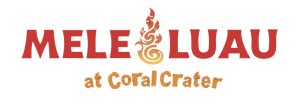Haleiwa is a North Shore community and census designated place (CDP), in Waialua District of Oahu City and County of Honolulu. Haleiwa can be found on Waialua Bay at the mouth of Anahulu Stream, also known as Anahulu River. Check this out
This harbor houses a small boat dock. The shore is also surrounded by Haleiwa Alii Beach Park on the north side and Haleiwa Beach Park on the south side. Kaiaka State Recreation Area is located on Kiaka Point, just west of the town center. It’s right next to Kaiaka Bay. The census population of Haleia was home to 4,941 people as of 2020.
In 2018, the estimate was 4,040. This is the North Shore’s largest commercial hub. Many of its buildings still retain the old character of a plantation town. This makes it a favorite destination for residents and tourists alike who visit the surfing and diving spots along the northern shore.
Benjamin Dillingham, a North Shore businessman opened Haleiwa Hotel in 1898. The Hawaiian word hale is “house”, while the iwa refers to a frigatebird. The railroad line that ran from Honolulu, Hawaii to Waialua was also constructed by him. It followed the coast of Kaena Point and finished in front his hotel. It was the railroad that inaugurated the Haleiwa Limited passenger train. This trip took approximately two hours. The Oahu Railway & Land Company chartered this railroad. Next article
The City and County of Honolulu designated Haleiwa a State Historic, Cultural, and Scenic District on August 24, 1984. Every new building must follow a plan that reflects Haleiwa’s territorial architecture from the earlier period of sugar production. There are 30 historical buildings in the town that feature plantation architecture styles inspired by Waialua Sugar Co.
Four 8-inch M1888 rail guns were assigned by the 16th Coast Artillery to Battery F. They were situated nearby on spurs that had been specially designed. They were quickly dismounted, and the railway guns became Battery Kahuku. Two P-40B fighters piloted jointly by Kenneth M. Taylor and George Welch, were able to fight the Japanese invasion of Pearl Harbor on December 7, 1941. They took off from now abandoned Haleiwa Airfield.
Haleiwa can be found at 21deg35’24″ North and 158deg6’50″ West (-21.590050, +158.113928), to the southwest on Kamehameha Highway, State route 83 from Pupukea. Kamehameha highway becomes state route 99 at Haleiwa (at the “Weed circle” traffic circle), which continues eastward across Oahu’s central plateau, to Wahiawa.
Joseph P. Leong Highway extends state route 83 north to Haleiwa.
Old Haleiwa Town’s northern entrance is marked by the Rainbow Bridge, which spans the Anahulu River. You will find many galleries, shops and eateries there. There are two beach parks that surround Waialua Bay’s small boat harbour: Haleiwa Beach Park to the north, and Haleiwa Alii Beach Park to the south.
The CDP covers a 3.0-square mile (7.7km2), according to the United States Census Bureau. It covers 2.3 miles (5.9km2) of land and 0.69 sq miles (1.8 km2) water. It is covered by 23.67% of water.
Haleiwa is located about an hour drive from Waikiki. Today, Haleiwa as well the North Shore of Oahu have become the surf capital of the globe. Haleiwa (pronounced hah-layEE-wah) is an ancient community that was founded in 1900 and focuses on the sugar plantation business. The slides below will give you more information about Haleiwa.
Haleiwa is Hawaiian for “house of frigate birds” and the town’s architecture today still looks like it did in the early 1900s. . Haleiwa became a State Historic, Cultural, and Scenic District in 1984. To preserve Haleiwas Territorial Architecture from the early days of sugar production, all new construction must comply with strict specifications.
The Haleiwa airportfield was first used for flight training in 1928. The field was used as an emergency landing area and to practice real combat conditions during the 1940s. The runway became an important reliever base during World War II when it was made paved. Fighter aircraft were stationed on the island to patrol the area.
Benjamin Dillingham, a businessman from Haleiwa built Haleiwas best hotel in 1898. The hotel was named Haleiwa by Benjamin Dillingham and is located at the site of ‘Haleiwa Joseph” restaurant. Opening the Haleiwa Hotel was a catalyst for new business and increased tourism to the region. Many of the original buildings and business family homes from Haleiwa are still in existence today.
Haleiwa Town today is home to many restaurants, bars, and cafes. These include local-style plate lunches as well as pizzas, Mexican, Thai, and fine dining at Jamesons and Haleiwa Joes. Rosies and Caf Haleiwa are well-known for their delicious breakfasts. In the evening, you’ll find the relaxed atmosphere at Breakers Bar at Cholos Mexican Restaurant.
The 7-8-mile miracle, which runs from Haleiwa up to Sunset Beach, is often called the North Shore of Oahu. It has home to three famous surf spots and beaches: Sunset Beach, Banzai Pipeline and Waimea Bay. The North Shore is flooded by the North Pacific Ocean’s swells every winter. These waves are large and often dangerous. They can reach up to 40 feet in height!
Matsumoto’s Shave Ice is a popular local spot and offers Oahu’s best shave ice. The shop is open 7 days a week, from 9:00 AM to 6:00 PM. It’s been in operation for more than 50 years.
Haleiwa Beach Park offers a variety of options, including surfing lessons that are available year-round by Uncle Bryan’s Sunset Suratt Surf School or the North Shore Surf Girls. It is also walking distance to shopping, dining and sightseeing in Haleiwa Town. “Hale’iwa Beach
Many beaches that are less well-known to traditional surfers have become popular for foil surfing because of the large surfing community and the year-round interest.
